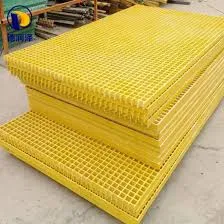
-
 Afrikaans
Afrikaans -
 Albanian
Albanian -
 Amharic
Amharic -
 Arabic
Arabic -
 Armenian
Armenian -
 Azerbaijani
Azerbaijani -
 Basque
Basque -
 Belarusian
Belarusian -
 Bengali
Bengali -
 Bosnian
Bosnian -
 Bulgarian
Bulgarian -
 Catalan
Catalan -
 Cebuano
Cebuano -
 China
China -
 China (Taiwan)
China (Taiwan) -
 Corsican
Corsican -
 Croatian
Croatian -
 Czech
Czech -
 Danish
Danish -
 Dutch
Dutch -
 English
English -
 Esperanto
Esperanto -
 Estonian
Estonian -
 Finnish
Finnish -
 French
French -
 Frisian
Frisian -
 Galician
Galician -
 Georgian
Georgian -
 German
German -
 Greek
Greek -
 Gujarati
Gujarati -
 Haitian Creole
Haitian Creole -
 hausa
hausa -
 hawaiian
hawaiian -
 Hebrew
Hebrew -
 Hindi
Hindi -
 Miao
Miao -
 Hungarian
Hungarian -
 Icelandic
Icelandic -
 igbo
igbo -
 Indonesian
Indonesian -
 irish
irish -
 Italian
Italian -
 Japanese
Japanese -
 Javanese
Javanese -
 Kannada
Kannada -
 kazakh
kazakh -
 Khmer
Khmer -
 Rwandese
Rwandese -
 Korean
Korean -
 Kurdish
Kurdish -
 Kyrgyz
Kyrgyz -
 Lao
Lao -
 Latin
Latin -
 Latvian
Latvian -
 Lithuanian
Lithuanian -
 Luxembourgish
Luxembourgish -
 Macedonian
Macedonian -
 Malgashi
Malgashi -
 Malay
Malay -
 Malayalam
Malayalam -
 Maltese
Maltese -
 Maori
Maori -
 Marathi
Marathi -
 Mongolian
Mongolian -
 Myanmar
Myanmar -
 Nepali
Nepali -
 Norwegian
Norwegian -
 Norwegian
Norwegian -
 Occitan
Occitan -
 Pashto
Pashto -
 Persian
Persian -
 Polish
Polish -
 Portuguese
Portuguese -
 Punjabi
Punjabi -
 Romanian
Romanian -
 Russian
Russian -
 Samoan
Samoan -
 Scottish Gaelic
Scottish Gaelic -
 Serbian
Serbian -
 Sesotho
Sesotho -
 Shona
Shona -
 Sindhi
Sindhi -
 Sinhala
Sinhala -
 Slovak
Slovak -
 Slovenian
Slovenian -
 Somali
Somali -
 Spanish
Spanish -
 Sundanese
Sundanese -
 Swahili
Swahili -
 Swedish
Swedish -
 Tagalog
Tagalog -
 Tajik
Tajik -
 Tamil
Tamil -
 Tatar
Tatar -
 Telugu
Telugu -
 Thai
Thai -
 Turkish
Turkish -
 Turkmen
Turkmen -
 Ukrainian
Ukrainian -
 Urdu
Urdu -
 Uighur
Uighur -
 Uzbek
Uzbek -
 Vietnamese
Vietnamese -
 Welsh
Welsh -
 Bantu
Bantu -
 Yiddish
Yiddish -
 Yoruba
Yoruba -
 Zulu
Zulu
pvc frp pipe
Understanding PVC and FRP Pipes A Comprehensive Overview
Pipes play a critical role in various industries, from water supply systems to chemical processing. Two popular materials used in pipe manufacturing are Polyvinyl Chloride (PVC) and Fiber Reinforced Plastic (FRP). Each material has unique properties and applications, making them suitable for specific tasks. This article explores the characteristics, advantages, and typical uses of PVC and FRP pipes.
What are PVC Pipes?
PVC, or Polyvinyl Chloride, is a synthetic plastic polymer that has been widely used in construction and plumbing. Introduced in the 1930s, PVC pipes have gained considerable popularity due to their durability, lightweight nature, and cost-effectiveness. These pipes are typically resistant to corrosion, chemicals, and weather elements, making them suitable for both indoor and outdoor applications.
One of the significant advantages of PVC pipes is their low thermal conductivity, which helps in insulating the transported fluids. They are available in various sizes and configurations, catering to a wide range of needs, such as residential plumbing, irrigation systems, and sewage transportation. Additionally, PVC pipes are non-toxic and can be recycled, contributing to environmental sustainability.
What are FRP Pipes?
Fiber Reinforced Plastic (FRP) pipes are composite materials made by combining plastic (usually polyester, vinyl ester, or epoxy) with reinforcing fibers (like glass, carbon, or aramid). This combination results in a material that possesses exceptional strength-to-weight ratios, making FRP pipes widely used in industries where high performance is essential.
pvc frp pipe

FRP pipes are particularly celebrated for their resistance to chemical degradation, making them ideal for transporting aggressive chemicals, wastewater, and various industrial fluids. Their lightweight nature simplifies installation processes, reducing labor costs and time. Moreover, FRP pipes can withstand high temperatures and pressures, making them suitable for high-performance applications.
Applications of PVC and FRP Pipes
PVC pipes are commonly used in the following applications - Plumbing Systems Ideal for potable water supply due to their non-toxic nature. - Drainage and Sewage Systems Widely used for waste water disposal because of their excellent resistance to environmental degradation. - Irrigation Systems Utilized in agriculture for their lightweight and corrosion-resistant properties.
FRP pipes, on the other hand, are favored in - Chemical Processing Their resistance to corrosive materials makes them perfect for transporting various chemicals. - Oil and Gas Industries Often used for transporting fluids due to their strength and durability. - Power Plants Employed in cooling water systems and other critical components due to their performance under high temperature and pressure.
Conclusion
Both PVC and FRP pipes are invaluable assets in modern infrastructure. While PVC pipes excel in plumbing and drainage applications due to their affordability and ease of installation, FRP pipes shine in environments requiring high strength and chemical resistance. Understanding the unique benefits of each material allows engineers and contractors to make informed decisions that cater to the specific requirements of their projects. As industries continue to evolve, the demand for durable, efficient, and sustainable piping solutions will only grow, ensuring the relevance of both PVC and FRP pipes in the future.
Latest news
-
Exploring the Benefits of Top Hammer Drifter Rods for Enhanced Drilling PerformanceNewsJun.10,2025
-
High-Precision Fiberglass Winding Machine for GRP/FRP Pipe Production – Reliable & Efficient SolutionsNewsJun.10,2025
-
FRP Pipes & Fittings for Shipbuilding - Corrosion-Resistant & LightweightNewsJun.09,2025
-
Premium FRP Flooring Solutions Durable & Slip-ResistantNewsJun.09,2025
-
Premium Fiberglass Rectangular Tanks Durable & Lightweight SolutionNewsJun.09,2025
-
Tapered Drill String Design Guide Durable Performance & UsesNewsJun.09,2025









